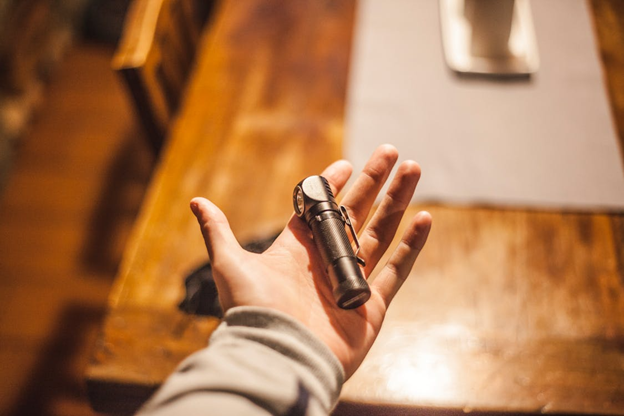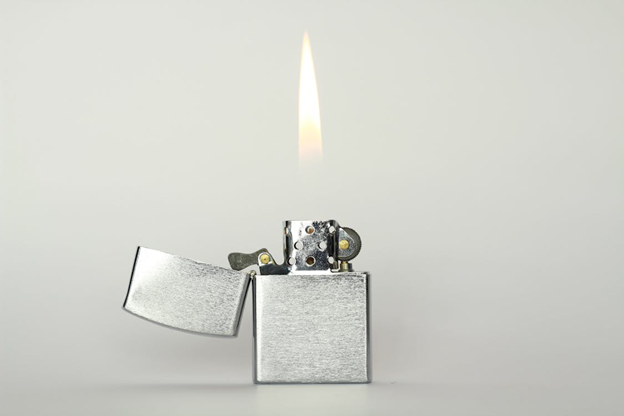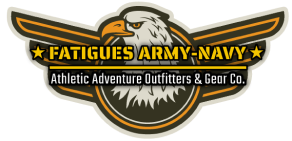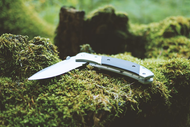EDC Essentials: A Quick Checklist
Posted by: Fatigues Army Navy Outdoor Gea on 10th Oct 2025
Whether you prefer to carabiner your EDC gear to your utility belt or wear a big pair of camo cargo shorts with plenty of pockets, what you carry is easily as important as how accessible it is, if not more so.
That said, here are some of the most indispensable pieces of EDC gear, from a high level. Start here, carry these, and expand your loadout as experience teaches.
A Knife
A knife is, hands down, the most important piece of EDC gear conceivable, not just on this list but on any that pretends to offer the same insights.
Effectively the most fundamental of all tools and an iteration of one of the six simple machines (the wedge), there is little you can’t do with a knife, even though there might be other, more specialized tools out there. It is in its generality that the utility of a knife shines.
Here are some things to look for in a good EDC knife:
- Fixed or folding: Fixed knives are sturdier than folders, but less convenient to carry and less discreet.
- Steel chemistry: High-carbon, low chromium steels may offer solid edge retention and toughness, but they are generally more prone to rust and corrosion than stainless alloys. The three main attributes you are looking to balance are edge retention, toughness, and corrosion-resistance. Some modern super steels, though expensive, offer a good balance of all three.
- Scale material: Wood and bone may be pretty, but they are not as durable as modern synthetics like G10, micarta, carbon fiber or metal alloys. Consider the general durability of an EDC knife’s scales as the knife is likely to be abused.
- Size: You might be surprised at how well a relatively small blade will perform. Let your preferences determine the size of knife you carry, but remember that larger knives are heavier and less discreet. Most people choose a knife with a blade length between 3 and 4 inches for EDC.
- Blade profile: A thin, swept blade will be better for skinning, carving, and detail work, whereas a stockier blade with a sheepsfoot or tanto profile will have a stouter tip that’s less likely to break. There are also blades with combination edges that are partially serrated, offering the best of both worlds.
- Carry options: Many quality pocket knives come with a pocket clip that streamlines carry.
- Lock type: If you intend to carry a pocket knife with a lock, consider the locking type. Some of the best knife locks are button, compression and crossbar locks, but others, such as collar locks, lock backs, frame locks and liner locks are also serviceable.
The knife that works best for you will depend on your needs and preferences, but just make sure your EDC loadout contains at least one.
A Multitool
A multitool is another great piece of EDC gear to carry because it might contain tools that a knife might not, and as a result of its superior specialization might offer an advantage for more complex work.
Some tools to look for in a multitool include:
- A pry bar
- Pliers
- Wire cutters or strippers
- Bit drivers
- An awl
- A hook
- Saw blade
- Bottle or can openers
- Scissors
There are other functions a multitool might fulfill but these are some good ones.
An EDC Flashlight

An EDC flashlight is another indispensable piece of EDC gear, perhaps only behind a knife in terms of utility. If you start carrying an EDC flashlight you will be surprised how often you reach for it. Here are some things to consider or look for in a flashlight.
- Durable construction: There are quality EDC flashlights made with composites, steel, aluminum, and other materials. It doesn’t matter what you choose, so long as it works for you and is durable.
- Luminous output: Look at the lumen rating; the higher, the brighter the light will be. Many quality EDC flashlights are rated to between 200 and 1000 lumens.
- Number of settings: Quality EDC flashlights don’t just offer one setting; many feature low, medium and high settings along with strobe settings or other light colors.
- Wireless charging: Some EDC flashlights offer wireless, magnetic charging, which is superior because there is no port to fail or get obstructed.
- IP rating: Quality EDC flashlights are both waterproof and dustproof; some are so waterproof they can be fully submerged and continue working.
- Pocket clip/carry options: Some EDC flashlights have a pocket clip that allows for carry in two directions, such that the clip can be attached to the bill of a cap, allowing for hands-free use, similar to a headlamp.
- A magnetic base: Some EDC flashlights feature a magnetic base that enables them to be used hands-free on ferromagnetic surfaces. This is a surprisingly valuable feature.
A Lighter

A lighter is another indispensable tool for EDC, and is needed as a light, to light candles, to light fires, and for so much more. Here are some of the things to consider before purchasing a lighter:
- Durability: as a general rule, lighters made with a metal housing will be more durable than plastic lighters that are not.
- Ignition type: Most lighters are either powered by a flint wheel or by piezo ignition. Piezo ignition is convenient but once it burns out it can’t be effectively replaced. Flint ignition systems can usually be re-flinted.
- Fuel: Most lighters use either butane or a liquid fuel. Butane is convenient, clean burning and cheap, but not effective in the cold. Liquid lighters tend to let their fuel evaporate, but they are much more reliable in the cold.
- Whether or not the lighter is refillable: Disposable lighters cannot, as a general rule, be refilled, which is wasteful. However, many types of lighters can be refilled. These are generally better for EDC.
- If the flame is adjustable or not: Some lighters have an adjustable flame. This is not absolutely necessary for an EDC lighter but it’s still a nice feature to have.
Load Up Your Camo Cargo Shorts Here
Getting ready to improve your EDC loadout? Make sure your camo cargo shorts have enough products and then shop our collection. We have everything covered here and much more.

